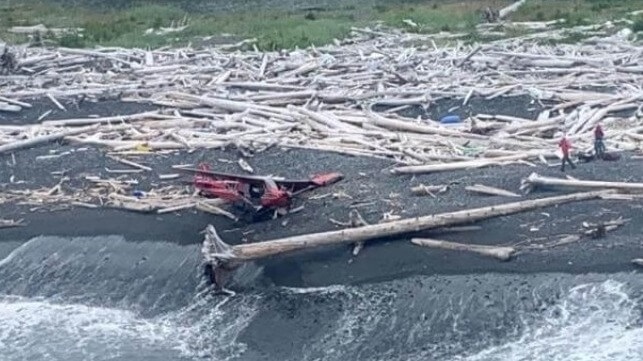U.S. Coast Guard, Navy Keep in Practice With Shoreside Rescue Missions

The U.S. Coast Guard and the U.S. Navy perform an important secondary role in shoreside search and rescue in the Northwest, where their long-distance SAR capabilities may be the only available option for remote, backcountry distress situations. There may not be heaving seas on these missions, but the stakes are often just as high.
On Tuesday, the Coast Guard rescued two people after their plane crashed on Montague Island, at the entrance to Prince William Sound in Southeast Alaska.
Coast Guard Sector Anchorage received a report at 1615 hours that a Super Cub bush plane with two people aboard had crashed on a beach on Montague Island. The two survivors were able to communicate with a friend using the InReach service.
A Coast Guard helicopter crew based at Cordova arrived on scene within two and a half hours. The helicopter landed near the crash site, took aboard the two survivors and transported them safely back to Cordova. They were in stable condition with no reported injuries.
“The quick response by the aircrew in Cordova helped these two get the help they needed,” said Chief Petty Officer Katie Brown, Sector Anchorage command duty officer. “It’s incredible these two people made it out okay, and the fact that they had communication equipment readily available really aided in our response time.”
Last week, the U.S. Navy carried out a more challenging shoreside rescue for a badly-injured hiker at Colchuck Lake, an isolated backcountry destination about 70 miles to the east of Seattle.
On the evening of June 30, a Navy helicopter SAR crew out of Naval Air Station Whidbey Island was on a training flight when they received a request to evacuate a 28-year-old man who had sustained severe head injuries. After a refueling stop, they got under way at about 2225 hours and headed for Colchuk Lake, about 100 miles to the southeast of their home base.
Working with the Chelan County Sheriff's office, they arranged for the injured hiker's group to mark their position with strobe lights. Two members of the helicopter's crew rappelled down about 150 feet away from the injured man's location, and they had him prepped and ready for medevac within 11 minutes. The patient was delivered to a hospital in Seattle by midnight.
It was the 15th rescue mission that NAS Whidbey Island's three-helicopter SAR unit has carried out this year, including eight medevacs. It was also the second time that NAS Whidbey Island has dispatched a rescue helicopter to Colchuck Lake in recent years: in 2015, one of its aircrews carried out a challenging cliff rescue for a hiker who had gone over the edge in the area.
